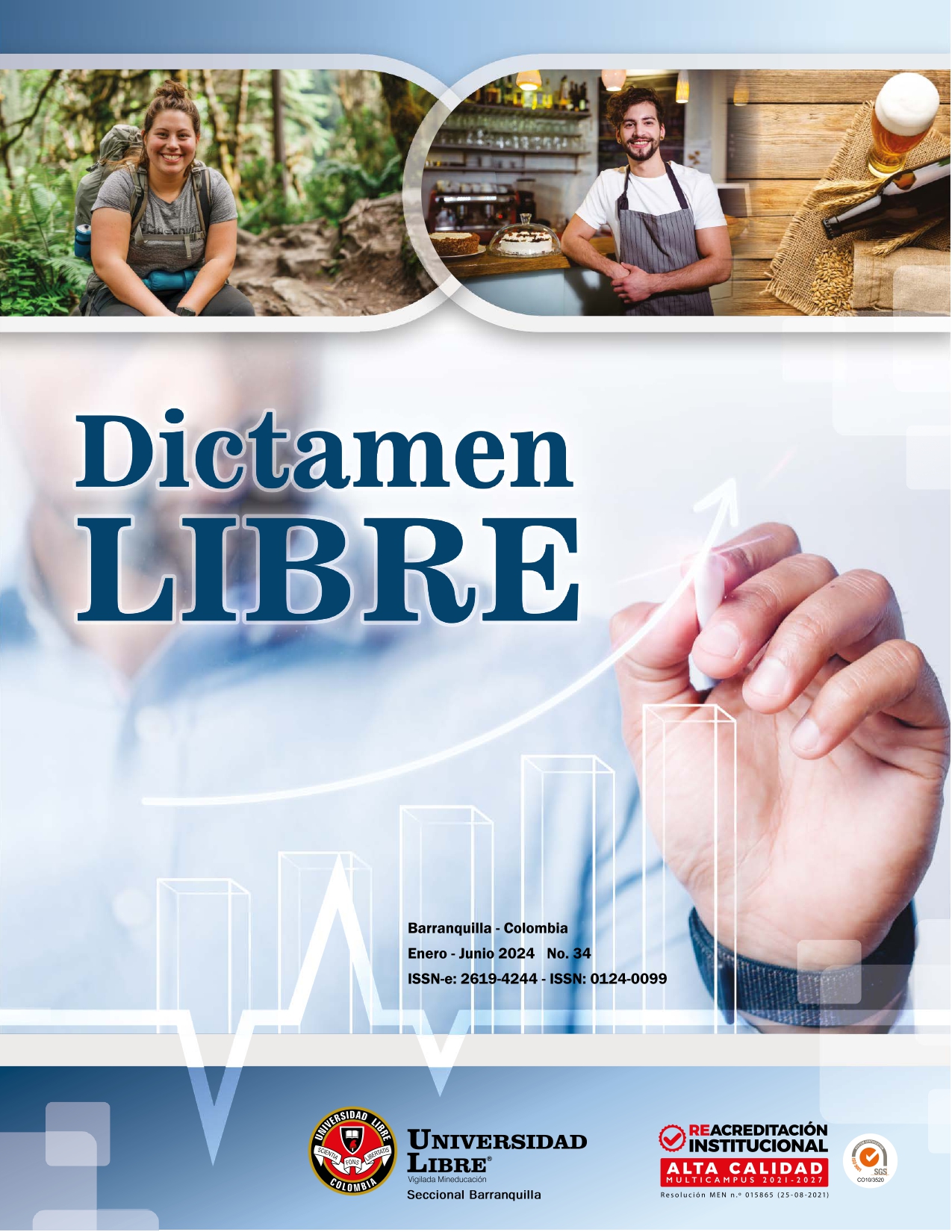Regression analysis of the factors affecting economic profitability of banana passion fruit production
DOI:
https://doi.org/10.18041/2619-4244/dl.29.7861Palabras clave:
Curuba, Modelo de regresión, Rentabilidad económica, Causalidad, Raíz unitariaResumen
Banana passion fruit production in Colombia contributes to the development of the country’s economy as it generates income and provides raw material for the agro-based industries. Profitability is a key aspect of economic efficiency and plays an important role in farmer´s decision-making therefore; the purpose of the study was to determine the different factors affecting the economic profitability of banana passion fruit production. A descriptive, quantitative, correlational and non-experimental design was selected and a regression analysis was performed. Results showed that the stationarity, normality, homoscedasticity and nonautocorrelation assumptions were not violated; all estimated coefficients were statistically significant and consistent with hypothesized sign. As such, the independent variables contributed to explain individually banana passion fruit economic profitability.
Referencias
Agronet. (2020). Ministerio de Agricultura de Colombia. https://www.agronet.gov.co/estadistica/Paginas/home.aspx
Abdulai, A. and Hazell, P. (1996). The Role of Agriculture in Sustainable Economic Development in Africa, Journal of Sustainable Agriculture, 7:2-3, 101-119, doi: 10.1300/J064v07n02_10.
Altendorf, S. (2017). Global prospects for major tropical fruits. Short-term outlook, challenges and opportunities in a vibrant global marketplace. In: Food Outlook Biannual Report on Global Food Markets. Food and Agriculture Organization of the United Nations. Recuperado de http://www.fao.org/3/I8080e/I8080e.pdf
Babatunde, O., Ikughur, A., Ogunmola, A. and Oguntunde, P. (2014). Effect of omitted variable due to misspecification error in regression analysis. International Journal of Modern Mathematical Sciences, 11(1), 49-57. Recuperado de http://www.modernscientificpress.com/Journals/ViewArticle.aspx?XBq7Uu+HD/8eRjFUGMqlRXLA2rPYuSQYom1CkHKRDFI9gZcQpWz0EQbLRW8qXIuQ
Bumbescu, S. (2015). Analysis models of profitability in agriculture. Bulletin of Taras Shevchenko National University of Kyiv. Economics, 9(174), 37-42
Cancino, S., Cancino-Escalante, G. and Quevedo-García, E. (2018). Modelo explicativo de la rentabilidad económica del cultivo de durazno en la provincia de Pamplona, Colombia. Económicas, 39(2), 63-76. https://doi.org/10.17981/econcuc.39.2.2018.04
Faga, H. and Ramos, M. (2006). Como profundizar en el análisis de sus costos para tomar mejores decisiones empresariales. Buenos Aires: Granica.
Flórez, J. and Miranda, E. (2017). Factores que influyen en la rentabilidad económica de la producción del cultivo de camu camu en la selva peruana. Revista Tzhoecoen, 9(1), 94-106. https://doi.org/10.26495/rtzh179.121610
Fuller, D. and Dickey, W. (1979). Distribution of the estimators for autoregressive time series with a unit root. Journal of the American Statistical Association, 74(1), 427-431. https://doi.org/10.2307/2286348
Goldfeld, S. and Quandt, R. (1979). Nonlinear methods in econometrics. Amesterdam: North-Holland.
Granger, C. (1969). Investigating casual relations by econometric models and cross-spectral methods. Econometrica, 37(3), 424-438. https://doi.org/10.2307/1912791
Geamănu, M. (2011). Economic efficiency and profitability. Studia Universitatis Vasile Goldis Arad, 2(1), 116-119.
Jarque, C. and Bera, A. (1987). A test for normality of observations and regression residuals. International Statistical Review, 55, 163–172. https://doi.org/10.2307/1403192
Lansink, A.O., and Peerlings, J. (2001). Micro econometric models for agricultural sector analysis. Wageningen University, Netherlands.
Kwiatkowski, D., Phillips, P., Schimdt, P. and Schin, Y. (1992). Testing the null hypothesis of stationarity against the alternative of a unit root: how sure are that economic time series have a unit root? Journal of Econometrics, 54(1-3), 159-178. https://doi.org/10.1016/0304-4076(92)90104-Y
Panin, A. and Hlophe, S. (2013). Does subsistence agriculture play a crucial role in food security in Swaziland? Development Country Studies, 3(4), 32-36.
Parra, O. and Cancino, G. (2019). Evaluation of induction of somatic embryogenesis from cotyledonary leaves of banana passion fruit (Passiflora Mollissma) L.H. Bailey. Respuestas, 24(3), 31-38. https://doi.org/10.22463/0122820X.1847
Phillips, P. and Perron, P. (1988). Testing for a unit root in time series regression. Biometricka, 75(2), 335-346. https://doi.org/10.2307/2336182
Ramírez, C. and Ávila, L. (2013). Modelo para medir la rentabilidad de los cereales alto andino en el departamento de Puno caso quinua. Revista de Investigación Altoandina, 15(1), 187-199.
Ramsey, J. (1969). Tests for specification errors in classical linear least squares regression analysis. Journal of the Royal Statistical Society, 31(2), 350-371. Recuperado de https://www.jstor.org/stable/2984219
Ravinthirakumaran, K., Selvanathan, E., Selvanathan, S.and Singh, T. (2015). Determinants of foreign direct investment in Sri Lanka. South Asia Economic Journal, 16, 233-256. https://doi.org/10.1177%2F1391561415598458
Salazar, A. and Ramírez, C. (2017). Fruit maturity stage and provenance affect seed germination of Passiflora mollissima (banana passion fruit) and P. ligularis (sweet granadilla) two commercially valuable tropical fruit species. Seed Science and Technology, 45, 383-397.
Turner, P. (2010). Power properties of the CUSUM and CUSUMQ tests for parameter instability. Applied Economics Letters, 17(11), 1049-1053. https://doi.org/10.1080/00036840902817474
Xaba, G. and Masuku, M. (2013). Factors affecting the choice of marketing channel by vegetable farmers in Swaziland. Sustainable Agricultural Research, 2(1), 212-220. https://doi.org/10.5539/sar.v2n1p112
Descargas
Publicado
Número
Sección
Licencia
Derechos de autor 2021 Dictamen Libre

Esta obra está bajo una licencia internacional Creative Commons Atribución-NoComercial-CompartirIgual 4.0.


